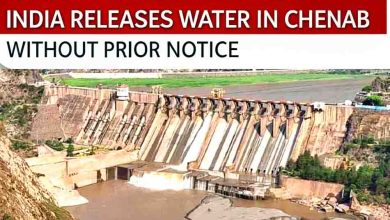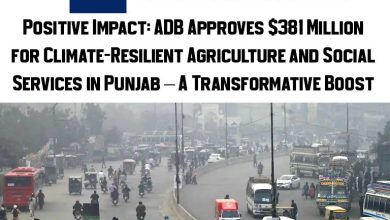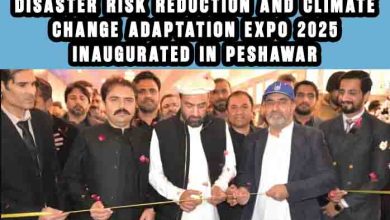Devastating Decline: Climate Change and Drought Slash Migratory Bird Numbers in Sindh
Climate change and drought slash migratory bird numbers in Sindh by over 50% in two years. Experts warn of lasting impacts on wetlands and biodiversity.
Climate change and drought slash migratory bird numbers in Sindh, raising alarm among conservationists and birdwatchers alike. Once a vibrant stopover on the Indus Flyway, Pakistan’s wetlands—especially in Sindh—are witnessing a worrying fall in bird populations.
Recent surveys by the Sindh Wildlife Department show a more than 50% drop in migratory bird numbers over the past two years. Experts warn that if urgent environmental and conservation actions are not taken, Pakistan may lose many of its avian guests forever.
The Indus Flyway: A Once-Thriving Corridor
The Indus Flyway, also known as Flyway Number 4, is one of the world’s most important bird migration routes. Stretching from Siberia to South Asia, it brings over 50 species of birds including cranes, mallards, storks, gulls, and plovers to Pakistan every winter.
Sindh, due to its diverse ecosystems—from lakes and lagoons to marshlands and coastal regions—has traditionally been one of the flyway’s richest zones. These birds help maintain ecological balance, boost biodiversity, and even contribute to eco-tourism in the region.
Sharp Decline in Bird Numbers
According to the 2024-25 migratory bird survey by the Sindh Wildlife Department:
- 2023: 1.2 million migratory birds
- 2024: 603,900 migratory birds
- 2025: 545,000 migratory birds
This steady decline, amounting to over 50%, underscores an environmental crisis. Nareri Lagoon, which once hosted over 200,000 birds, now reports just 112,000. Similarly, Rann of Kutch—another sanctuary—is down to 91,000 birds.
This alarming trend is traced back to two major culprits: climate change and persistent drought.
Drought, Climate Change, and Shrinking Wetlands
The 2022 floods briefly revived the wetlands, attracting more birds in 2023. But since then, prolonged drought and rising temperatures have reversed the trend.
Key habitats including:
- Manchar Lake
- Keenjhar Lake
- Hamal Lake
- Haleji Lake
- Nareri Lagoon
- Rann of Kutch
…are now drastically dry or degraded.
Mumtaz Soomro of the Sindh Wildlife Department noted,
“Sindh has long been a refuge for migratory birds due to its unique biodiversity and numerous lakes. But we’ve seen a gradual decline since 2023, directly linked to water shortages and climate instability.”
These once-flourishing habitats are drying up—leaving the birds with no resting, nesting, or feeding grounds.
Expert Insights on the Migratory Crisis
Karachi-based ornithologist Zohaib Ahmed emphasized that the problem extends beyond just climate issues.
“Human interference, often in the name of development, threatens these fragile wetlands. Illegal hunting, pollution, and encroachment have all added fuel to the fire.”
Ahmed specifically mentioned that despite some officials downplaying it, illegal bird trapping and sale are rampant in Karachi and the Kirthar mountain range.
Human Activities Threaten Conservation
Unregulated development, illegal bird trade, and wetland encroachments continue to put pressure on already-stressed ecosystems. Though authorities claim hunting is under control, on-ground realities differ.
Wildlife activists report:
- Unchecked illegal bird markets
- Weak law enforcement in protected zones
- Disruption from construction and land conversion
“The shrinking wetlands are bad enough, but when you combine that with poaching, you create a near-total collapse of the migratory system,” Ahmed warned.
The Role of Wetlands and Their Ecological Importance
Wetlands are not just bird habitats. They are crucial for:
- Water purification
- Flood control
- Carbon storage
- Sustaining biodiversity
The loss of migratory birds signifies the breakdown of entire ecological networks.
According to a report from Ramsar Convention on Wetlands (source), Pakistan has 19 Ramsar sites, many of which are in Sindh. These sites are under increasing threat from climate variability and mismanagement.
Conservation Measures and the Way Forward
To reverse the damage, experts propose the following:
- Wetland Restoration Projects
Refill, protect, and rejuvenate drying lakes like Manchar and Haleji. - Stronger Anti-Poaching Laws
Enforce stricter punishments against illegal bird trading. - Community Involvement
Train and incentivize local communities to become wetland guardians. - Climate-Resilient Infrastructure
Promote sustainable development projects that don’t harm wetlands. - Ecotourism Incentives
Boost funding by showcasing Sindh’s wetlands as eco-tourism hotspots.
You can read about international success stories in wetland conservation on Wetlands International — a resource for global practices.
Conclusion
The fact that climate change and drought slash migratory bird numbers in Sindh should serve as a wake-up call for policymakers, conservationists, and citizens alike.
If immediate action isn’t taken, Pakistan risks losing a vital part of its natural heritage. Not only will the birds vanish, but so will the balance of the ecosystems that rely on them.
This isn’t just about birds—it’s about biodiversity, climate resilience, and sustainable living.
Internal Links
- Pakistan’s Climate Policy Shifts After COP29
- Wetlands Conservation Strategies in South Asia
- Impact of Indus Water Politics on Biodiversity







